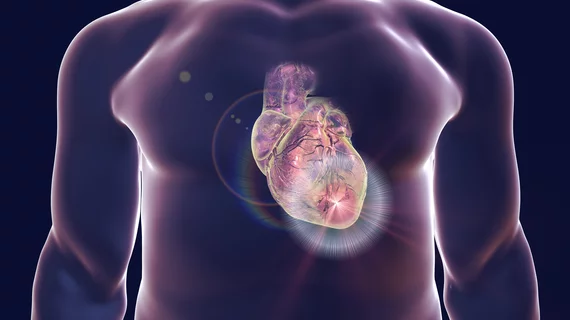Carotid artery MRI improves CVD, stroke risk assessment
Measuring wall thickness in carotid arteries with MRI may help better determine cardiovascular disease risk assessment, according to research published Oct. 9 in Radiology.
Plaque buildup in the carotid arteries which carry blood into the head and brain can be more easily imaged than in the coronary arteries. Unlike the widely used ultrasound-based carotid intima-media thickness (IMT) test—which measures the artery’s far wall and considers factors such as cholesterol and family history to determine cardiovascular disease risk—vessel wall MRI can image the entire carotid wall circumference and see three layers of the artery not visible on IMT.
"High-resolution MRI can tell us the stage of plaque in the wall and tell us about plaque features that could lead to stroke," lead author Bruce A. Wasserman, MD, from Johns Hopkins University School of Medicine in Baltimore, said in a prepared statement. "It can also see the adventitia, a vessel layer that may have an important role in cardiovascular risk because small vessels proliferate there, leading to thickening of the artery, which may be responsible for early disease development and progression.”
For their study, Wasserman and colleagues enrolled 698 participants from July 2000 to December 2013 from six U.S. research centers involved in the Multi-Ethnic Study of Atherosclerosis.
Study participants ranged from 45 to 84 years old, had no known history of cardiovascular disease and underwent ultrasound and MRI scans between 2000 and 2004 to compare carotid artery wall thickness.
Follow-up exams were conducted to determine any correlation between carotid artery wall thickness measurements and coronary heart disease and stroke.
To the researchers' surprise, results showed that the association between wall thickness and cardiovascular events was stronger with both non-contrast and contrast-enhanced MRI than it was with IMT. However, due to costs, they noted that additional research is needed to determine how much MRI can add to non-invasive predictive models already.
"We've come a long way with MRI techniques and their ability to discriminate the carotid artery wall and assess adventitia thickness," Wasserman said. "Ultrasound has also improved, and we want to be able study cardiovascular risk and carotid artery thickness using these contemporary techniques."

